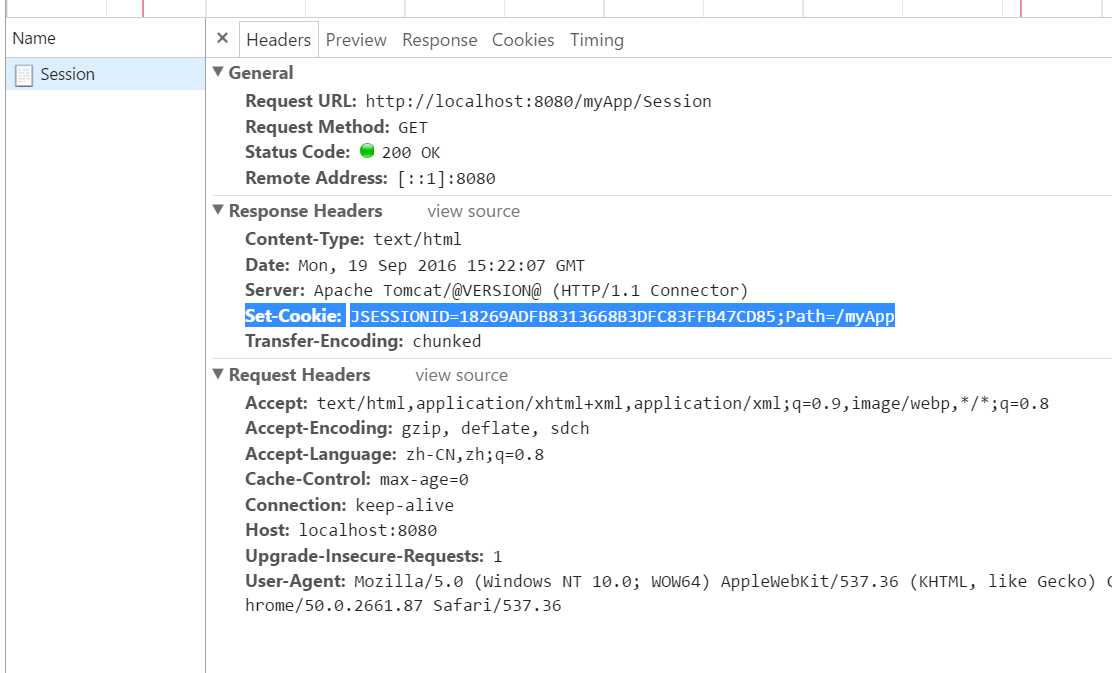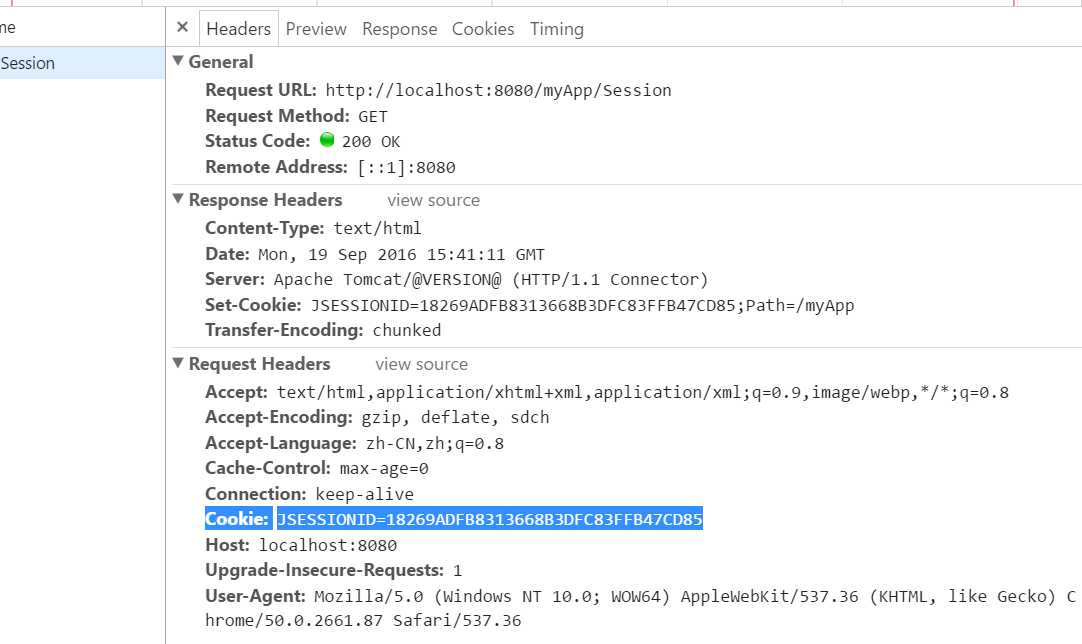标签:
因为Http的无接连,无状态,所以造就了Cookie,Session的诞生。怎样让http看上去有连接呢,需要浏览器和服务器商量建立一个唯一标识代表一个会话(即sessionId).
1. sessionId 需要服务端创建session, 否则服务器不会自己创建session,也不会返回JSESSIONID给浏览器的cookie。 即需要程序员通过request.getSession(true)去创建。
2.当程序员在应用里创建session后,服务器会把sessionId(key) 和 session对象 (value) put到hashMap里面
最后返回请求时,tomcat会通过HttpResponseBase返回JSESSIONID给浏览器的cookie

/** * Send the HTTP response headers, if this has not already occurred. */ protected void sendHeaders() throws IOException { if (isCommitted()) return; // Check if the request was an HTTP/0.9 request if ("HTTP/0.9".equals(request.getRequest().getProtocol())) { committed = true; return; } // Prepare a suitable output writer OutputStreamWriter osr = null; try { osr = new OutputStreamWriter(getStream(), getCharacterEncoding()); } catch (UnsupportedEncodingException e) { osr = new OutputStreamWriter(getStream()); } final PrintWriter outputWriter = new PrintWriter(osr); // Send the "Status:" header outputWriter.print(this.getProtocol()); outputWriter.print(" "); outputWriter.print(status); if (message != null) { outputWriter.print(" "); outputWriter.print(message); } outputWriter.print("\r\n"); // System.out.println("sendHeaders: " + // request.getRequest().getProtocol() + // " " + status + " " + message); // Send the content-length and content-type headers (if any) if (getContentType() != null) { outputWriter.print("Content-Type: " + getContentType() + "\r\n"); // System.out.println(" Content-Type: " + getContentType()); } if (getContentLength() >= 0) { outputWriter.print("Content-Length: " + getContentLength() + "\r\n"); // System.out.println(" Content-Length: " + getContentLength()); } // Send all specified headers (if any) synchronized (headers) { Iterator names = headers.keySet().iterator(); while (names.hasNext()) { String name = (String) names.next(); ArrayList values = (ArrayList) headers.get(name); Iterator items = values.iterator(); while (items.hasNext()) { String value = (String) items.next(); outputWriter.print(name); outputWriter.print(": "); outputWriter.print(value); outputWriter.print("\r\n"); // System.out.println(" " + name + ": " + value); } } } // Add the session ID cookie if necessary HttpServletRequest hreq = (HttpServletRequest) request.getRequest(); HttpSession session = hreq.getSession(false); if ((session != null) && session.isNew() && (getContext() != null) && getContext().getCookies()) { Cookie cookie = new Cookie(Globals.SESSION_COOKIE_NAME, session.getId()); cookie.setMaxAge(-1); String contextPath = null; if (context != null) contextPath = context.getPath(); if ((contextPath != null) && (contextPath.length() > 0)) cookie.setPath(contextPath); else cookie.setPath("/"); if (hreq.isSecure()) cookie.setSecure(true); addCookie(cookie); } // Send all specified cookies (if any) synchronized (cookies) { Iterator items = cookies.iterator(); while (items.hasNext()) { Cookie cookie = (Cookie) items.next(); outputWriter.print(CookieTools.getCookieHeaderName(cookie)); outputWriter.print(": "); outputWriter.print(CookieTools.getCookieHeaderValue(cookie)); outputWriter.print("\r\n"); //System.out.println(" " + // CookieTools.getCookieHeaderName(cookie) + // ": " + // CookieTools.getCookieHeaderValue(cookie)); } } // Send a terminating blank line to mark the end of the headers outputWriter.print("\r\n"); outputWriter.flush(); // System.out.println("----------"); // The response is now committed committed = true; }

3.当浏览器有sessionId的cookie后,以后的请求都会把sessionid的cookie传给服务器。

服务器获取到请求的sessionId数据后, 会去内存到(保持session的hashMap)里面通过sessionId去获取session。
标签:
原文地址:http://www.cnblogs.com/shapeOfMyHeart/p/5887227.html